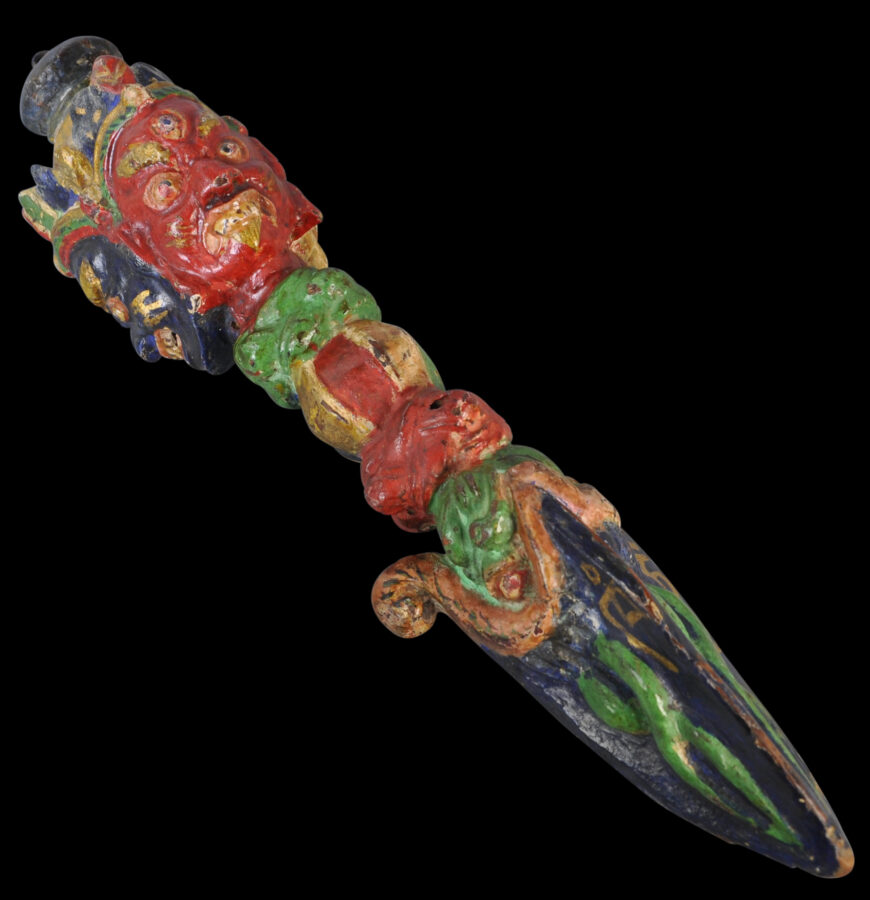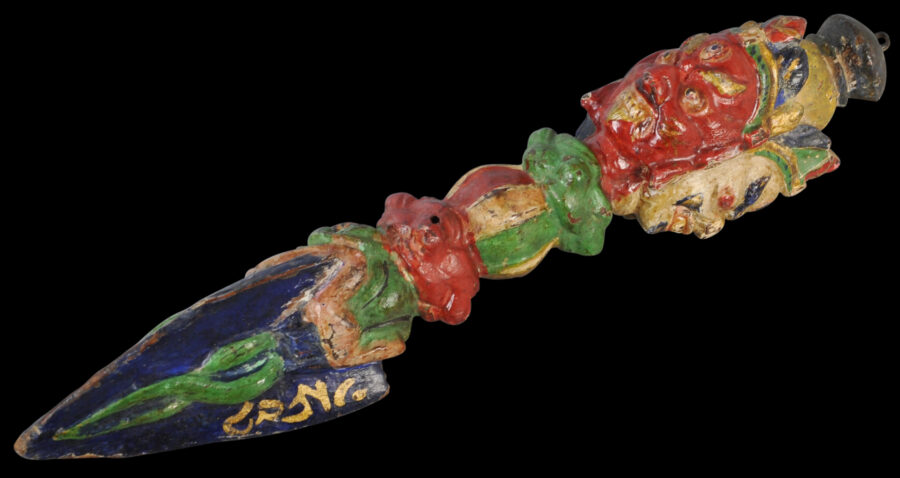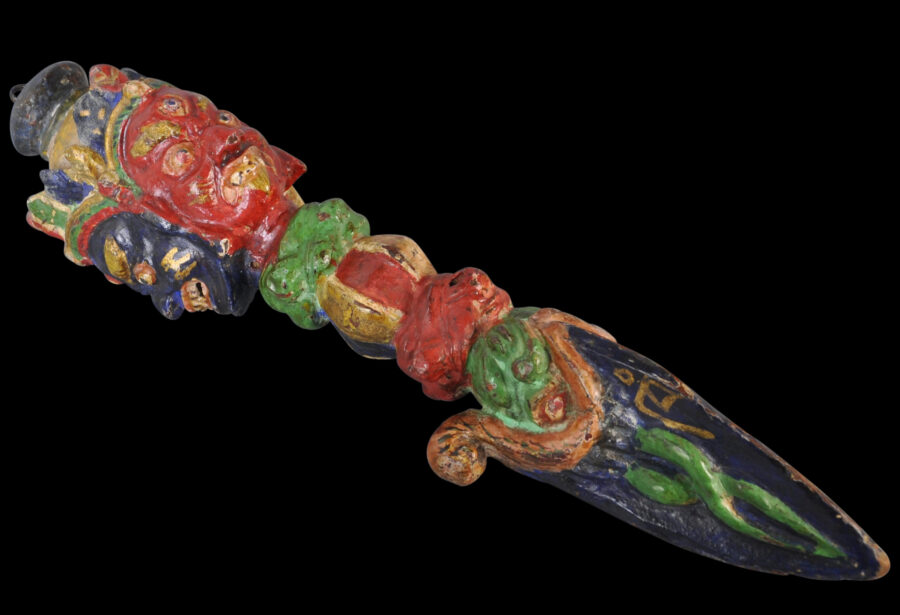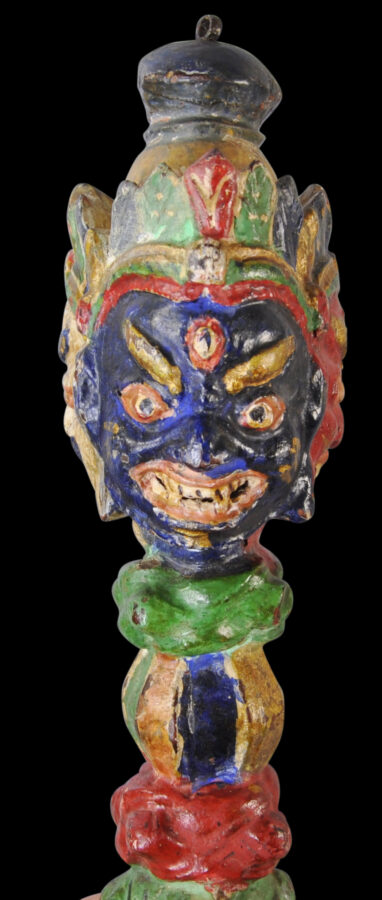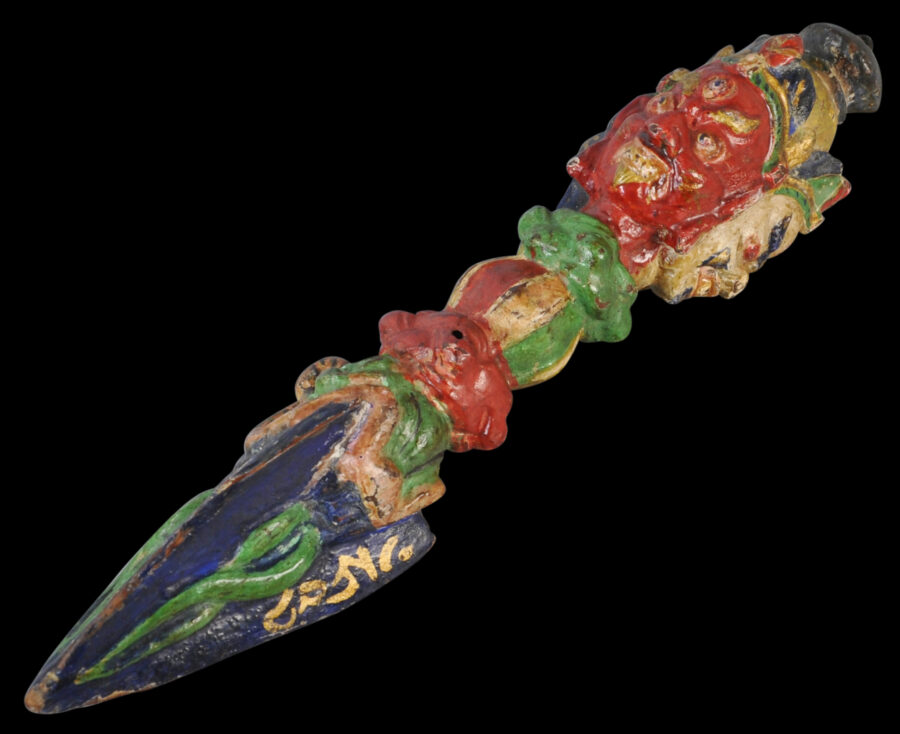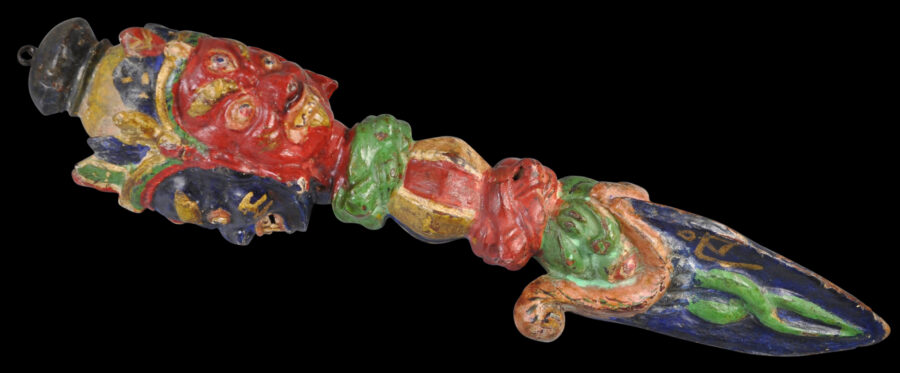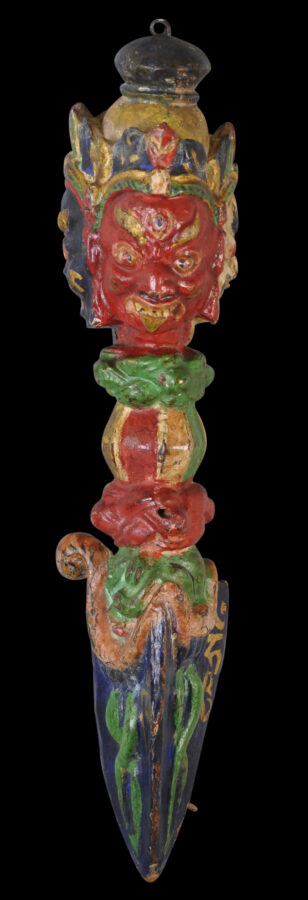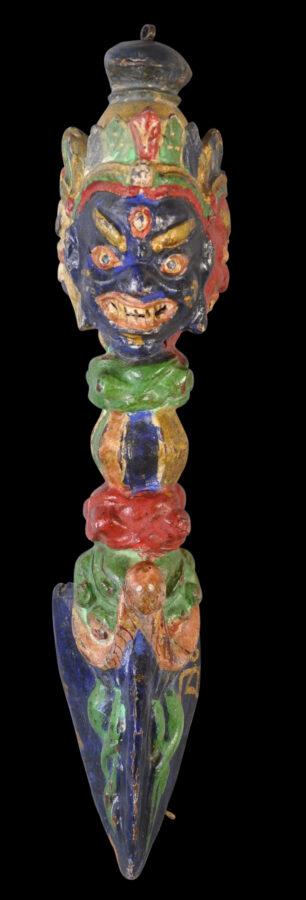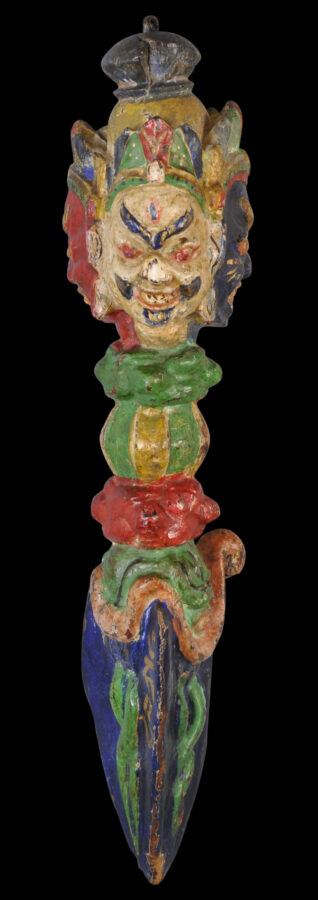Enquiry about object: 9082
Tibetan Wood & Polychrome Phurba
North-Eastern Tibet 19th century
length: 30.8cm, width: approximately 6.8cm, weight: 217g
Provenance
UK art market
This tantric ritual vajra dagger known as a phurba (also spelt purba and phurpa) is of carved wood. It retains its original 19th century painted decoration – including blue, green, red, cream and gold paint.
It is of typical form with three sides – three heads on the handle and three sides to the blade.
The (blue) blade emerges from the mouth of a makara. Each of the three sides of the blade is decorated with a pair of green, entwined snakes or nagas. Two of thre three blade sides have been inscribed in gold paint with lantsa or some related script.
The mid-section is carved with two symbolic knots (one in red, the other green). The handle is carved with three faces of a wrathful deity, possibly Mahakala – one blue, one red and one cream.
Purbas were used to ritually assault the enemy. Uusually, phurbas – which started out as ritual instruments – became centre of a cult all of its own in Tibet.
Similar examples are illustrated in Reynolds (1999, p. 167), Pal (2003, p. 172), and Shanghai Museum (2001, p. 124-125).
The example here is in very good condition. Paint losses are minimal and the age is readily apparent.
References
Henss, M., Buddhist Ritual Art of Tibet: A Handbook on Ceremonial Objects and Ritual Furnishings in the Tibetan Temple, Arnoldsche, 2020.
Pal, P., Art from the Himalayas & China: Asian Art at the Norton Simon Museum, Yale University Press, 2003.
Reynolds, V. et al, From the Sacred Realm: Treasures of Tibetan Art from the Newark Museum, Prestel, 1999.
Shanghai Museum, Treasures from Snow Mountains: Gems of Tibetan Cultural Relics, Shanghai Museum, 2001.
Thurman, R., & D. Weldon, Sacred Symbols: The Ritual Art of Tibet, Sotheby’s/Rossi & Rossi, 1999.



